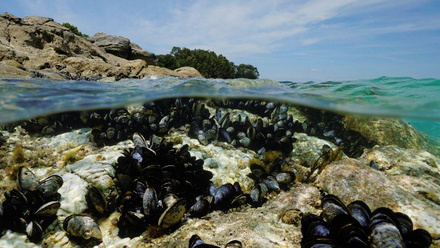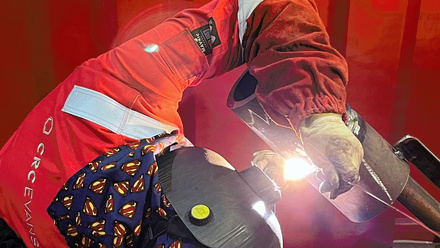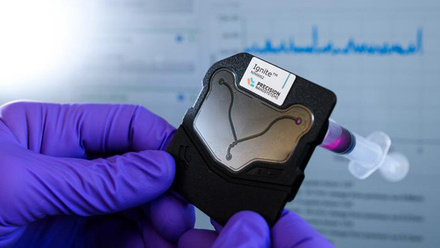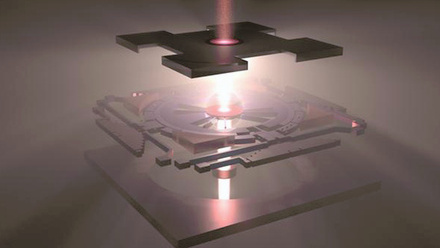Chameleon skin inspires colour changing film
A flexible film responds to stretching, pressure or humidity by changing colour.
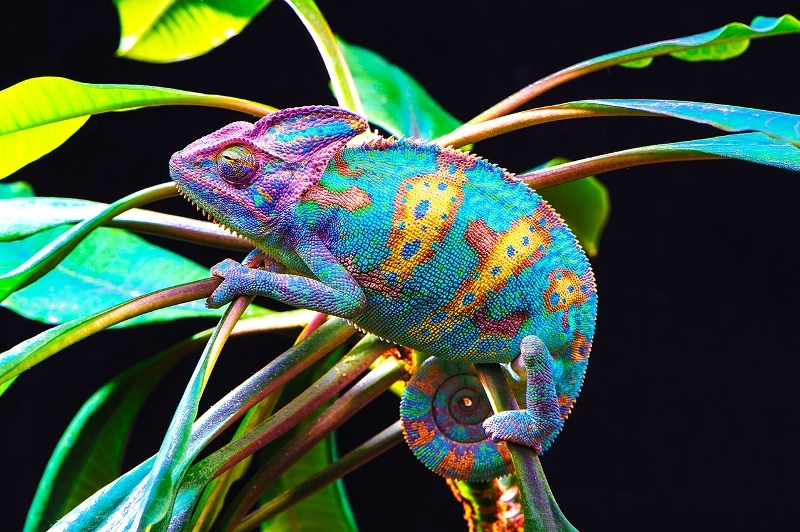
By mimicking the crystalline nanostructures of chameleon skin, a flexible film made of cellulose nanocrystals changes colour when stretched, or when exposed to pressure or humidity. This could find application in technologies such as smart skins, chemical and mechanical sensors, and anti-counterfeiting areas that can show or hide writing made by an inkless pen.
‘Chameleons are amazing animals that can change colour rapidly and reversibly in accordance to surrounding environments through relaxing/exciting skin,’ says Fei Song, Professor at Sichuan University, China.
‘When the chameleon skin changes from relaxation to tension, the deformation of guanine crystal array occurs accordingly, resulting in colour changing. In our design, we want to seek an environmental-friendly material that has a similar function with that of guanine crystals.’
Song, along with Professor Yu-Zhong Wang from the University, achieved this through the self-assembly of cellulose nanocrystals (CNCs) – the formed periodic array presents structural colours.
Song explains that in previous works, CNC-based materials did not demonstrate sufficient flexibility upon stretching or can only display stretching-induced colour changes that are observed with crossed polarisers at most. These shortcomings greatly limit their application.
The team has overcome this by introducing polyethylene glycol diacrylate (PEGDA) – a linear PEG molecule with terminal carbon-carbon double bonds – to crosslink the network into rod-shaped nanocrystals, producing reversible structural colour changes visible to the naked eye. The bright iridescent colours range from blue to red, depending on the PEGDA amount.
It also endowes flexibility and elasticity, like skin, to inherently brittle CNC films, with additional strength. The researchers claim the films can stretch up to 39% of their original length before breaking.
The colour-changing mechanism is established during the stretching and relaxing process. The deformation of the PEG network induces changes of the CNC-ordered array and corresponding pitch.
‘Because structural colouration depends on the pitch of materials, the changed pitch results in the colour changes – pitch increases, red-shifted colour changes, pitch decreases, blue-shifted colour changes,’ Song says.
Despite some films being scaled up, mass production has not been achieved. Song concludes, ‘If mass production is achieved, we foresee such environmentally-friendly materials having a brilliant future.’


